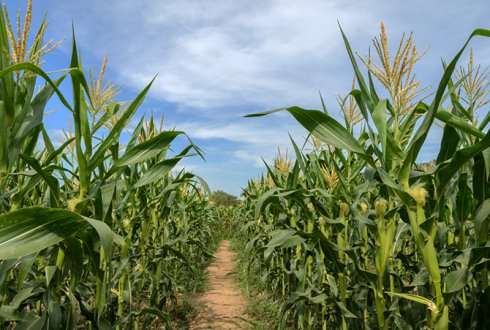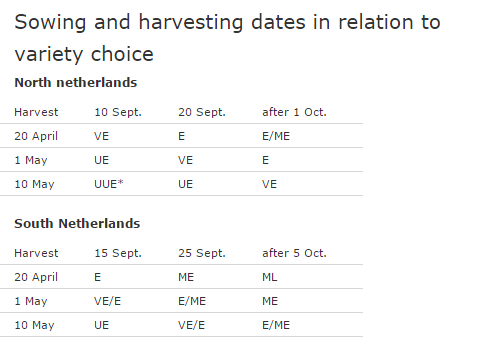Dutch silage maize farmers can increase their yield in the long term by using earlier varieties. This was the conclusion reached by maize scientists at Wageningen UR based on many years of practical cultivation tests. The use of earlier varieties increases the chance that the maize will ripen properly and ensures better (soil) conditions for harvesting. Moreover, it would provide more space for growing a full-value after-crop, such as green manure crops or the creation of new grassland. A well-developed after-crop prevents minerals from leaching out of the soil and deposits organic material in the soil. This is important for maintaining soil fertility and, therefore, yields.
Maize has had a poor reputation in relation to sustainability for many years. But while growing the crop on the same patch year after year with the addition of slurry used to be commonplace, these days are over. Stricter fertiliser standards have forced livestock farmers to approach the cultivation of silage maize from an arable farming perspective. This is not an easy task as the maximum amount of nitrogen they are allowed to use is much lower than the agricultural recommendation. A top yield is no longer possible without changing the cultivation proces partly due to the fact that a continuous cultivation of maize breaks down more organic material than is returned to the soil.
More organic material in the soil
Switching between maize and grass, or a green manure crop sown early, can help prevent this problem. A green manure crop (rye) sown on 15 October produces approximately 500 kg of dry matter per hectare and deposits 5 kg of nitrogen and 10 kg of potassium. Sowing Italian ryegrass on 15 September results in 3,000 kg of dry matter, 35 kg of nitrogen and 80 kg of potassium per hectare. Sowing the grassy green manure crop underneath the maize during the growth season can result in as much as 6,000 kg of dry matter with 70 kg of nitrogen and 160 kg of potassium.
High yield
In the project Grondig boeren met Maïs ('thorough farming with maize'), Wageningen UR scientists have compared various approaches in the province of Drenthe over a period of four years. Tests at the Kooyenburg test farm show that the smart use of earlier varieties results in the same or higher total roughage yield per hectare than a continuous cultivation of late maize. "It is still difficult for farmers nonetheless," says scientist Jos Groten. "Bringing forward the harvest results in lower maize yields in the first couple of years. In the long term, however, it does help maintain and possibly even increase yield. This requires farmers and contractors to change their perspective."
Joint efforts towards greater sustainability
To introduce more farmers to the benefit of earlier varieties and other sustainable actions, demo fields were developed on their land as well as at the test farm. In these so-called satellite farms or example farms, various farmers and contractors make plans for a more sustainable maize cultivation and discuss the positive and negative developments. It has been shown that this leads to the faster implementation of new elements for sustainable farming. On this basis Wageningen UR is working with other parties in the south of the Netherlands to develop a similar approach.
Maize is the second largest crop in the Netherlands (after grass) with an area of 224,000 hectare in 2015.
Example: Farmers in the south of the Netherlands who can sow on 1 May and aim to harvest around 34-36 % dry matter on 25 September need to use an early (E) or medium-early (ME) variety.
Provided by Wageningen University
























